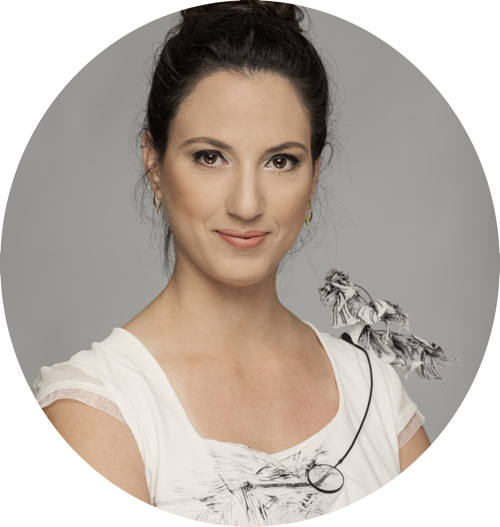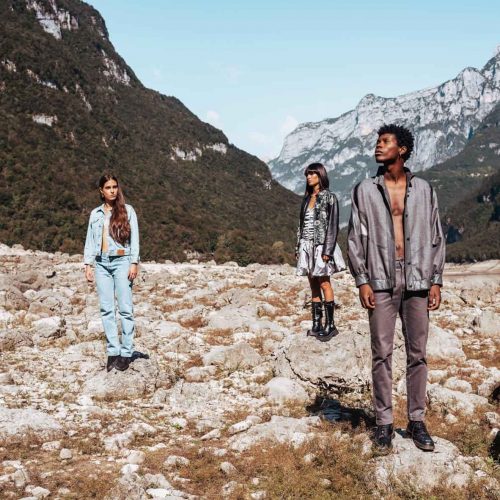Sustainable Luxury: Swarovski new sustainability report 2019
In the last almost 10 years Swarovski has been dealing with corporate social responsibility and sustainability issues. In 2010 the company published for the first time a C.S.R report and from 2013 onwards, every two years the company publishes a detailed sustainabilty report sharing its strategy and actions around this topic. In 2017 they refreshed their sustainability strategy and from now onwards it is based around five strategic priorities which represent the areas where Swarovski hope to make the most positive impact. The areas are women's empowerment, water stewardship, fair partnerships, conscious design and sustainable innovation. In order to operate their sustainability strategy, the company developed a series of initiatives and programs. According to the company this strategy not only puts its employees’ wellbeing at heart but also that of the environment and society as a whole.
In the report the company highlights the importance of collaboration, the need for partnerships between individuals, companies and organizations to collectively find solutions to issues such as climate change, social inequality, and natural resource depletion. The company is collaborating through global initiatives such as the UN Global Compact, the Women’s Empowerment Principles, the World Economic Forum’s Compact for Responsive and Responsible Leadership, and by working towards the UN Sustainable Development Goals (SDGs) to achieve positive impact.
One of the aims of the company is to ensure sustainability excellence by 2020 in all Swarovski manufacturing and production locations via a positive production program. It is based on the notion that the company can make a big difference within their own value chain.
For example, demanding the highest possible standards for their production locations, increasing transparency and improving the way they measure sustainability performance, working with employees to understand local community and environmental challenges and creating solutions to address them. All of these actions are done while taking into consideration the local context of the supply chain to better fit the solutions to the place and engage internal stakeholders and often local NGOs too.
Women Empowerment
The majority of Swarovski's customer base, and 77% of its workforce, are women, making it a superior topic on the company's agenda. The company works according to the UN Women's Empowerment Principles to achieve gender equality.
In 2018 Swarovski together with BSR (business for social responsibility) initiated the first multi-stakeholder exploration into the topic of women empowerment. Through this partnership, Swarovski supported the production of a revealing white paper, written and published by BSR, on the issues for those women involved in the production of jewelry. Issues like: lack of formal employment opportunities, lack of women in leadership and female role models, low wages and poor working conditions, exposure to health and safety hazards and low levels of education increasing the risk of sexual harassment and gender-based violence.
After these barriers where shared in the report the company did a case study to deal with these issues in order to find the right way in which women could feel more secured, appreciated and empowered in the company. The case study was held in China in one of the company's key supplier, spotlighting how workplace health and financial inclusion can unlock women’s full potential and help them recognize their abilities.
Water Stewardship
Water is an essential resource for Swarovski crystals, gemstones and jewelry but with water becoming a scarce resource the company started planning and implementing recycled water supply into their value chain. Today 76% of the consumption of the company's global production sites’ total water demand is recycled and in Wattens, Austria a closed-loop wastewater treatment system cleans and recycles 99% of the water from the crystal-cutting process.
The company decided to pilot water stewardship programs in two out of many of the company sites, in Thailand and Plattsburgh, USA. In these regions, they collaborated with local authorities, NGOs and communities, including employees and their families, to better understand the freshwater challenges and the potential context-based and interventions they can make. In Thailand the project aims to strengthen the business’ resilience to environmental hazards and allow Swarovski colleagues to help their communities prepare for the impacts of climate change. The idea behind the partnership is that, by increasing disaster resilience in the private sector, businesses can, in turn, support the resilience of the communities around them.
On a broader perspective the company developed a water stewardship program the inspiring Swarovski Waterschool. It aims to motivate present and future generations to practice sustainable water use, ensuring long-term health benefits and the availability of clean water for all.
Fair Partnerships
According to Swarovski's vision creating fair partnerships means engaging the company's employees, the suppliers and their operators, the communities around the production sites and NGOs. As part of a positive production program the company consulted with employees, management and NGO's in India, Vietnam and Thailand to ascertain the specific challenges and opportunities in these locations. From these exchanges the company learned that there are different topics bothering their workforce according to the different locations. From personal financial management to environmental pollution and other extreme climate events and of course health issues.
The company developed in 2014 a responsible sourcing initiative to monitor their supplier's performance and support them to better manage their working conditions. By now the company conducted almost 200 audits around 9 countries where their suppliers are based, reaching over 50,000 people. The more the responsible sourcing initiative will mature it increases the company's capacity to monitor and improve supply chain labor practices and closely support their suppliers to drive continuous improvement.
Conscious Design
Conscious Design means adopting principles of circularity and appreaciate waste as a resource according to the company's vision. They work closely with design schools inspiring future generations of talented craftspeople and business leaders to transform those principles into practice via design to catalyze change. At Central Saint Martins, with whom they have collaborated since 2001, they worked on different project themes around sustainability. In 2017, the joined project encouraged Jewelry students to consider cultural, ethical and environmental loss while creating jewelry using Swarovski Upcycled Crystals. The 2018 project ‘Old Stock: New Jewellery’ challenged students to disassemble unsold finished Swarovski jewelry and ornaments and transform them into new pieces, allowing the students to better understand circular design approaches and see worth in pre-existing materials.
Sustainable Innovation
While breakthrough innovation has the potential to revolutionize the wolrd's collective future, companies must act in the meantime. In the company's Wattens factory, investing in new burners that melt crystal glass, significantly reducing energy consumption and carbon emissions compared to conventional processes. The company is also investigating several waste streams for recycling. In India they employ an innovative burning process where the waste material from creating crystal pearls is converted to recycled raw beads for re-use. New innovations that can minimize the usage of chemicals, energy and heat are in use while processing the crystals along side new injection molding technology for the glass factories that reduce waste glass by 50%.
The company is focusing on its packaging, reducing the amount of mixed materials packaging while inceasing packaging recycability. They replaced to new carton versions that do not require the use of adhesive since they ship almost 160,000 boxes per year- an impactful measure environmentally. The company expanding the certification scope of its supply chain and aims to certify every step along the way.
In Spring 2018, Atelier Swarovski launched a collection: its first fine jewelry using Fairtrade gold. The new range included both Swarovski Created Diamonds and laboratory grown emeralds. They commited to use responsibly sourced gold in future fine jewelry collections. Swarovski Created Diamonds, which are identical to mined diamonds, the only difference is that their origin is a laboratory, not the earth.
After reading this report there are two main conclusions that should be highlighted. One, it is definitely impressive what Swarovski is already doing and aiming to do in order to minimize their negative impact from their operations and production. The programs, collaborations and school of though guiding their sustainability strategy and action plan are impressive. The second one, is that in the context of today's reality all of these good deeds might not be enough for the planet and the living creatures on it. As many leaders from the sustainable scene (like Orsola De Castro, Livia Firth and more) said in the past few months in public events we need to start doing much more much faster. The private sector needs to be much more bold, take risks and be authentic to survive this unstable turbulence.
+ Image Header: Laura Chouette via Unsplash
+ info: Swarovski

+ Words: Danielle Keller Aviram
Danielle Keller Aviram is a sustainable jewelry and fashion researcher, consultant and designer. She graduated an M.A focusing on sustainability in fashion at AMD Berlin after doing her B.A in jewelry and accessories design in "Shenkar" Tel Aviv. After her B.A she had her own international fine jewelry brand operating for 5 years.




